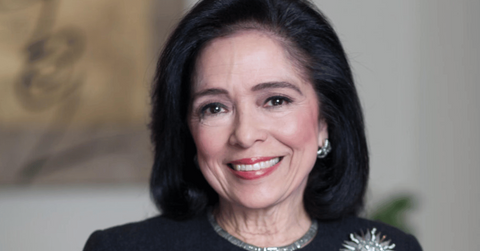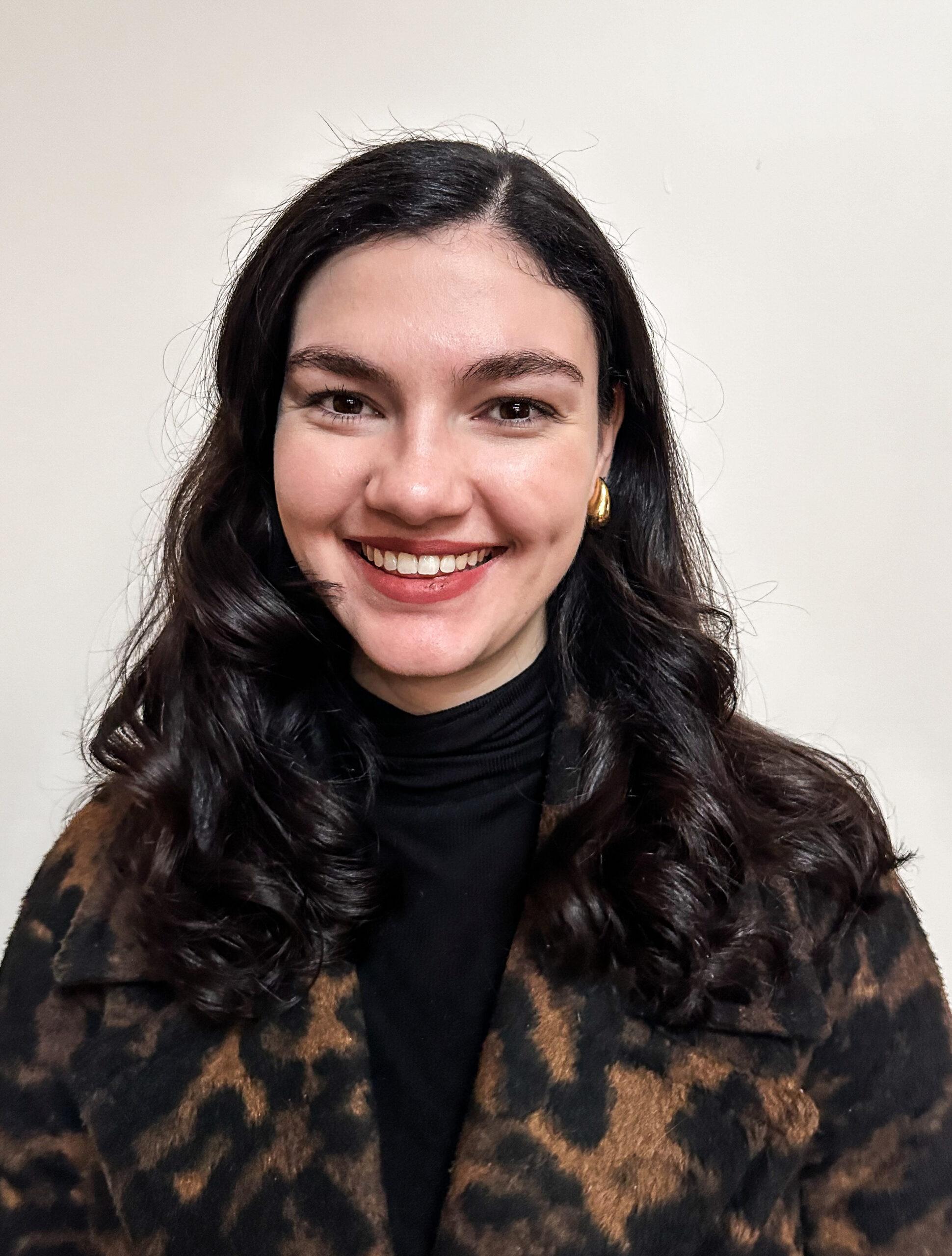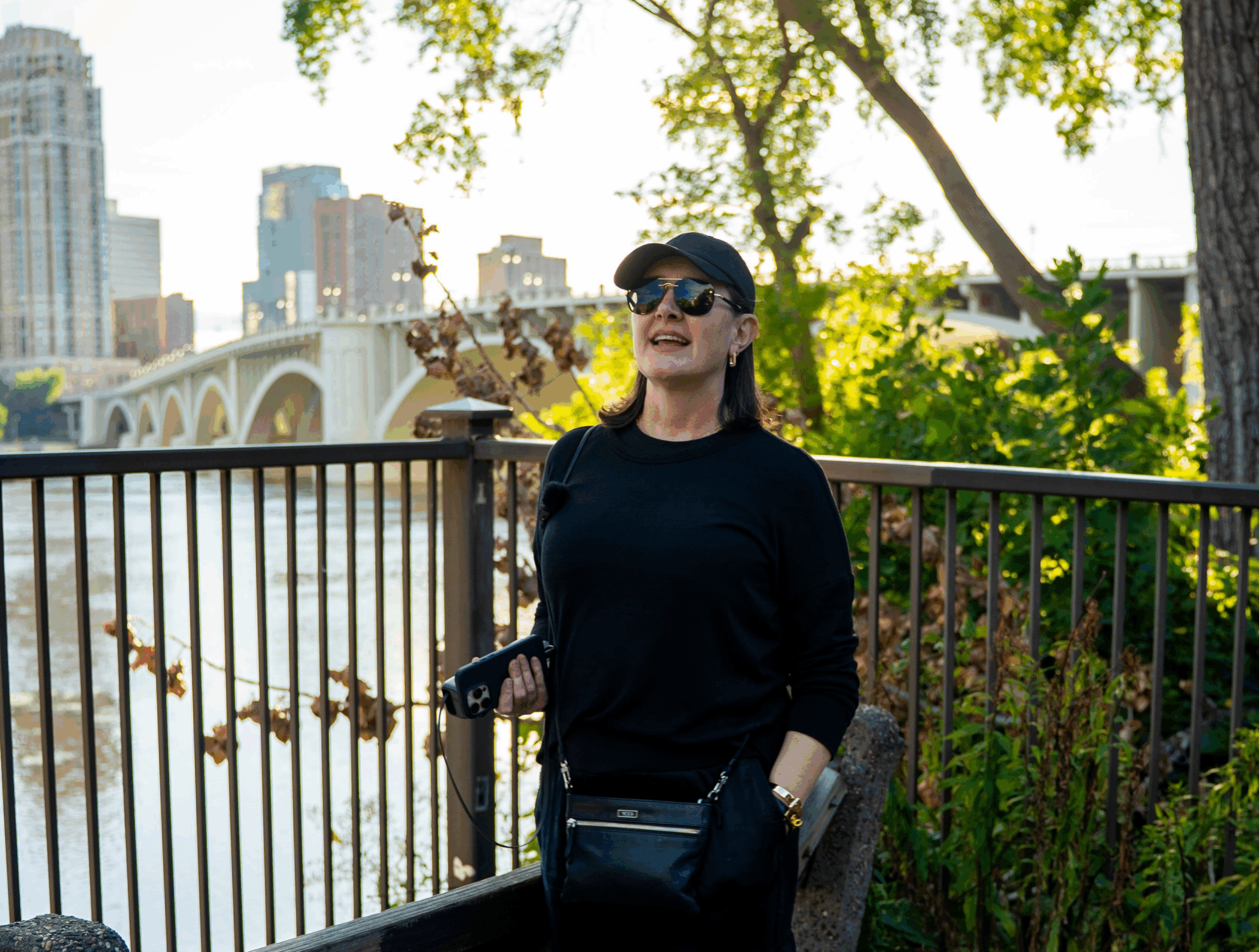After nearly three decades of transformative leadership, Dr. Joyce F. Brown is preparing to step down as president of the Fashion Institute of Technology (FIT), leaving her mark on the institution and the fashion education landscape.
As the first African American president of FIT, she has dramatically reshaped the school’s mission, elevating it from a training ground for the garment industry to a cutting-edge academic institution at the intersection of design, technology, and sustainability. Her visionary approach has not only modernized FIT’s curriculum but also established critical initiatives like the Social Justice Center, which has expanded opportunities for diverse students and transformed the industry’s talent pipeline.
In a sit-down interview, Her Agenda and Dr. Brown discuss what she’s achieved during her tenure as president, the “why” behind her creation of diverse initiatives and projects across the institution, and the advice she gives to future leaders in higher education.
Her Agenda: Tell me about your career journey and what it was like being FIT’s first African American president.
Dr. Joyce F. Brown: I’ve really spent my entire career in public higher education and public service.
I was a deputy mayor in the city for a brief spell and did a number of other kinds of things, but always in the area and in public service. So I had spent many years at City University, and when this opportunity was presented, I thought it was a good culmination of all that I had learned along the way. I had seen many things that gave me an idea of what I thought was important to do in a college and in a public higher ed institution where students didn’t have the same privileges and benefits as those who might otherwise go to Ivy League or private schools or travel away from home or all of those kinds of things.
So certainly, it is never incidental in our country when someone is an African-American or the first African-American. And I have to say that all I knew was that I needed to work hard, I needed to have a vision, I needed to have goals, and I needed to achieve them, and that the rest would take care of itself to a certain extent. So there may well have been considerations people had or concerns or feelings and beliefs that they had to hold on to and not really express because we were busy working and going forward.
And I’d like to think that it didn’t create any new and additional obstacles, at least those that were apparent.

Her Agenda: How has FIT transformed under your leadership during your almost 27-year tenure?
Dr. Joyce F. Brown: I think we’ve really achieved an awful lot of really positive things.
One of the things I’m most proud of is that there’s a different conversation that goes on here now. When I arrived 27 years ago, FIT had a wonderful reputation, but the reputation was that we were turning out workers for the garment industry. It wasn’t about higher-level kinds of aspirations and breakthroughs and creativity.
Now, the conversation in the community, in this academic educational community, is about research and data and applications of new technology and the merging of emerging technologies with all of the design capabilities that our very creative students have. I believe that is certainly transformational in terms of what students can expect when they come here, what the public can expect, and what the industry now expects from our graduates. And then, of course, we have the new building.
That is transforming the campus as well. And why that’s important? I mean, it became part of my mission to build the building, but it is also important because I think it creates a different ambiance. It creates a belief for the students that we’re investing in them, that they deserve and will have an important and state-of-the-art place to study and learn, and that faculty will have those facilities in which to teach.
We get our best work out of people when we invest in them and when we give them something to take pride in, in terms of the outcomes of their endeavors. So certainly those are two ways that I think it’s been transformed, and I’m very proud of that.
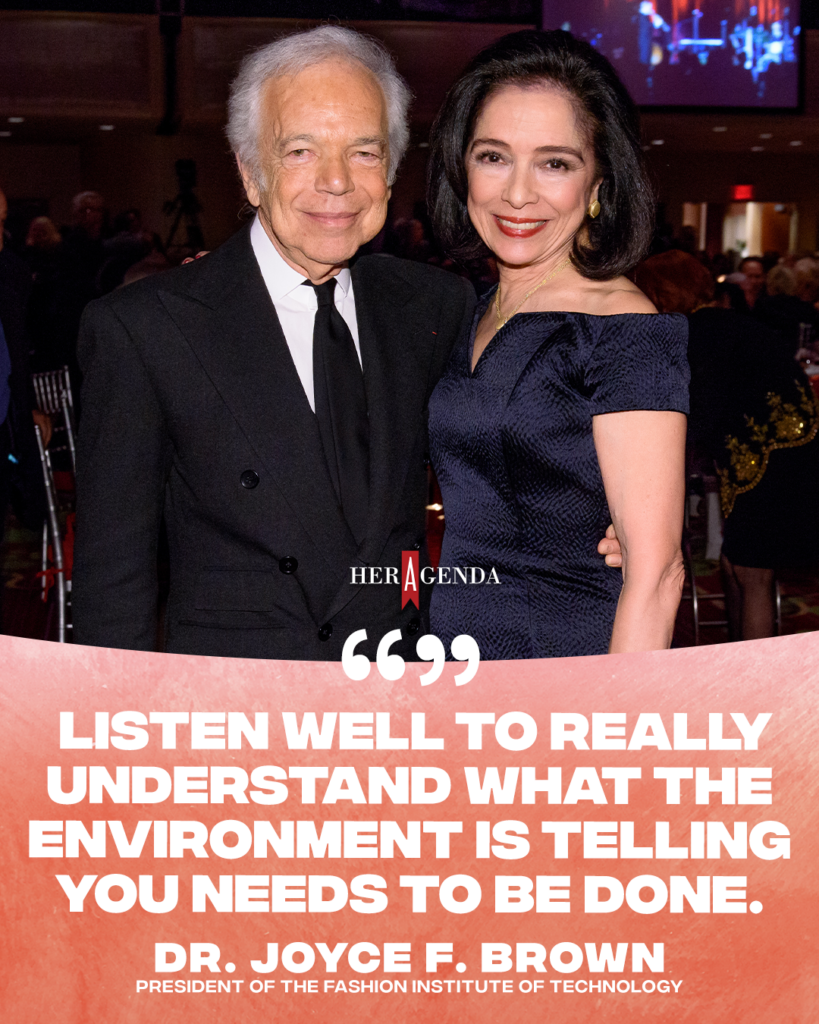
Her Agenda: Throughout your tenure, you’ve integrated the latest advancements in technology and moved the institution toward sustainability. How did you balance innovation with FIT’s commitment to preserving the traditional aspects of fashion education?
Dr. Joyce F. Brown: You have to continue to move forward. I always say, if you’re standing still, you might as well go backward.
You have to continue to push forward and understand the shifting landscape around you. So it is extremely important for the traditional aspects of fashion education, in terms of students having the hand facility that they need if they’re working in fashion design or in illustration in many of the creative areas, but they also have to know how to function in today’s world. They have to know how to learn the technology and make it work for them, how to apply it, and how it can enhance their natural and developed ability and creativity.
I think we balance it by giving the opportunity for people to explore and be innovative and experimental and, at the same time, preserve in the curriculum the things an individual needs to know so that they’ll know if the technology application is giving them the result they want. People make it sound harder than it ought to be. It’s only hard if we have resistance if in fact, faculty can feel confident in the importance of teaching those basics and the traditional ways and then enhance that by giving students the opportunity to experiment and learn new ways of applying the technology.
It’s a balance, but it is an adventure too. It’s a new way of learning and a new way of thinking. So I think by providing the opportunity for faculty to have that equipment and have that exposure. We have training from the technology staff so people feel comfortable with it. We support the use of it and the application of it in the curriculum and I think it works.
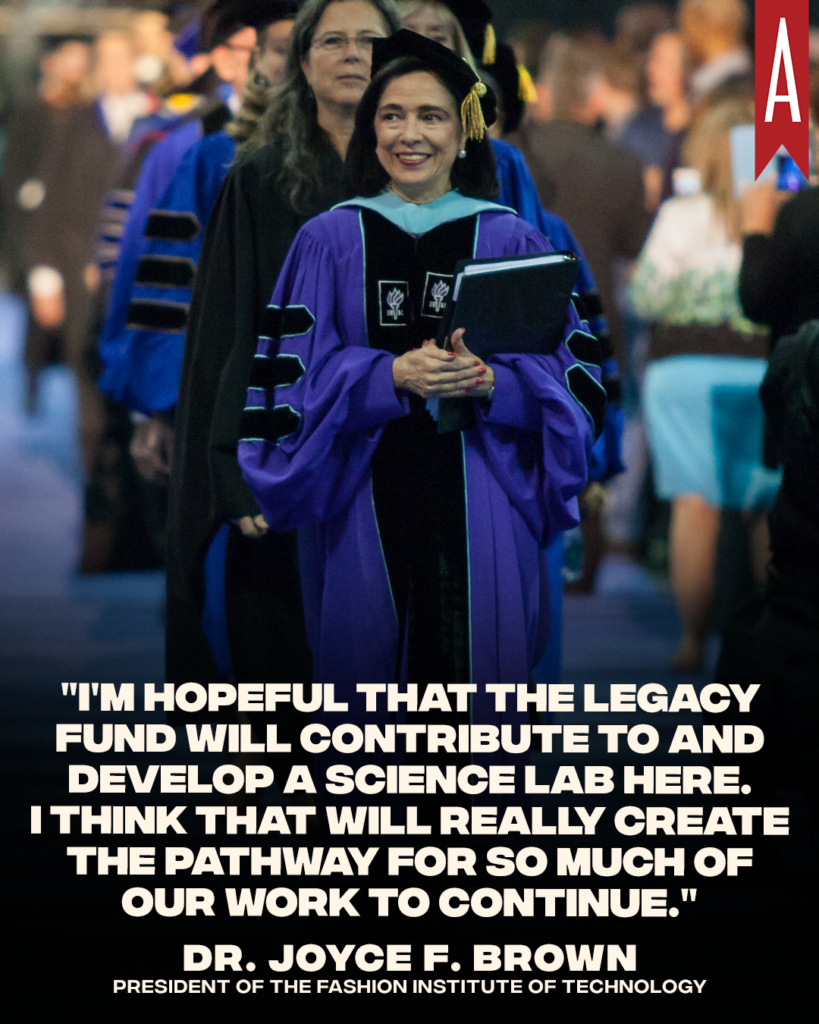
Her Agenda: I read that FIT will be honoring you at the upcoming annual gala on April 1. How does it feel to be celebrated amongst so many industry icons and peers?
Dr. Joyce F. Brown: It’s a wonderful opportunity for me. I’m very honored and privileged.
I have loved the work here, and I think having a lot to show for it, seeing the success of our students, seeing the competitions and accolades that come, the competitions that students win, and the accolades that our faculty receive is all [just one part of a whole puzzle]. And so, yes, I’m being honored, but I’m being honored for the productivity that we have created here together as a community. So, I’m very, very humbled and proud.
It was unexpected, but I’m very touched that this community, our board, and all the people who worked very hard to produce the next leaders for their industry are coming out and saying nice things about what we’ve been able to achieve. So, it’s very humbling, lovely, and nice, and I feel very honored by it.
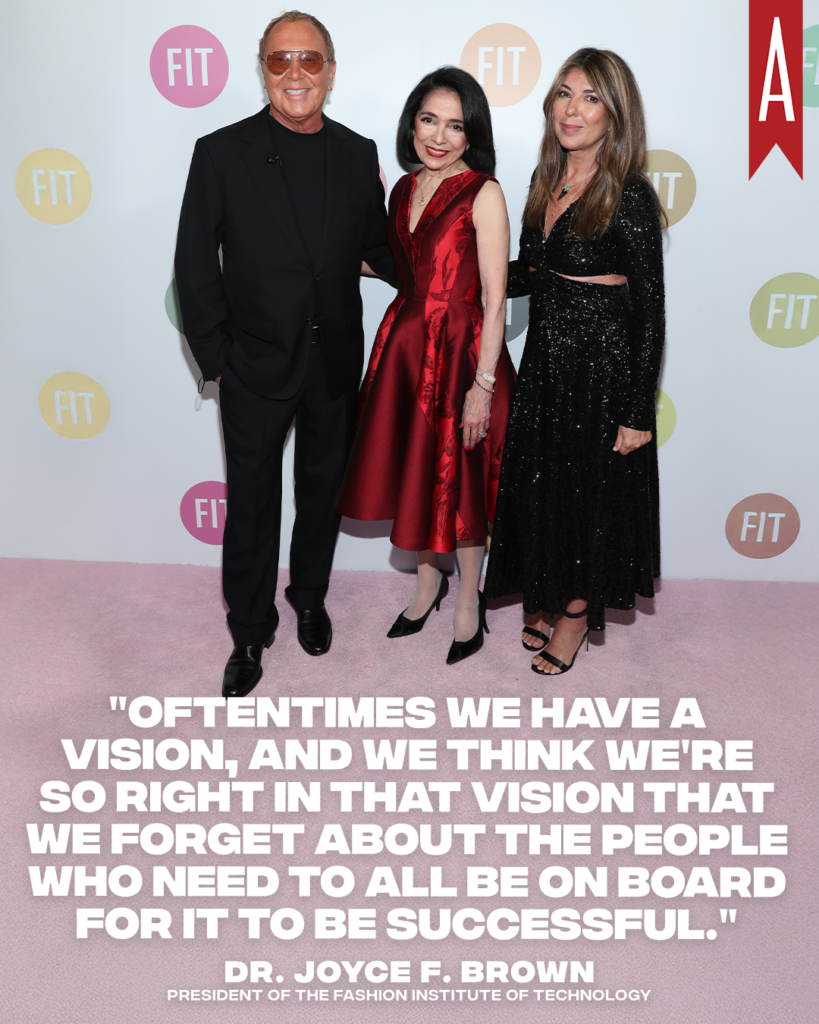
Her Agenda: The Dr. Joyce F. Brown Legacy Fund has been established in your honor. How do you hope this fund will continue your work and vision at FIT after your departure?
Dr. Joyce F. Brown: Theaspiration has been that we would incorporate sustainability, that we would have innovative kinds of approaches and new approaches to things, that we would diversify the industry and really create this sort of lifestyle industry that we’re supporting. I hope one of the things that I wanted to do when I finished the building, which took far longer than I thought it would, would be to really create a state-of-the-art science laboratory for the students to do their work.
In this work, we’ve created what we call bio-design. So, the science faculty is working with the design faculty, and they’re incorporating all of those elements of sustainable practices. They’re creating natural fibers.
We have a natural dye garden and they’re creating dyes that are non-toxic. They’re working on things that are biodegradable. So, what we’ve done in creating this movement, if you will, here at FIT, is we’ve partnered with Columbia, and MIT, and Stony Brook, and the laboratories that those campuses have are so much more advanced as our students have to travel and do the work there.
If we had the proper facilities here, I think we would get many more students and faculty involved. So, I’m saying all that to say I want that work to continue. I think it’s at the forefront of where the industry and the design industry are going.
I’m hopeful that the Legacy Fund will contribute to and develop a science lab here. I think that will really create the pathway for so much of our work to continue.
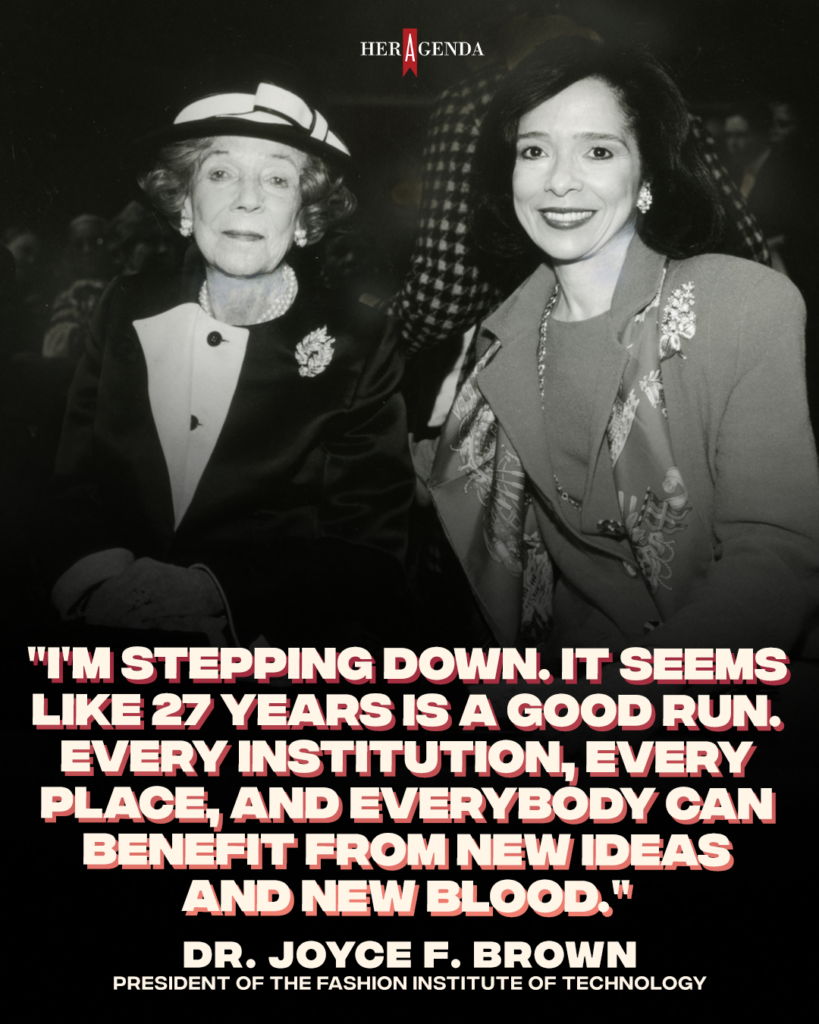
Her Agenda: The Social Justice Center you established at FIT is a significant resource for students. How has the Social Justice Center supported students at FIT?
Dr. Joyce F. Brown: We began the Social Justice Center with the idea of creating two things. One, a pathway for students who might not otherwise have the opportunity to come to FIT. Because, yes, we’re public and, yes, we are less expensive than a private institution, but for many students, it’s still a struggle. And the whole notion of talented individuals who could contribute to the industries and diversify the exposure in the industry not having a chance simply based on lack of opportunity, it seemed like we should do something about that.
And so that was one aspect of it, the pathway for students who might not otherwise have an opportunity. And then the other side of it was to really create a pipeline of a diversified, well-educated pool of potential employees to be hired in those industries so that the industry leadership would have the opportunity and the benefit of knowing what this diversified group of well-educated, talented, creative people could bring to their business. And so those are some of the benefits.
The students who have come have been on scholarships. We have been able to develop some mentoring both with our faculty and with businesses. Last summer and now this summer, we were able to raise some funds, and some of our students were able to study in Italy in a facility outside of Venice, where they’re really looking at cutting-edge applications of AI to the design process.
Last year, the students had a wonderful, transformative, and broadening experience. I’m hopeful that the same will be true this year as well. We’re trying to create opportunities that will, in fact, transform the future for these young people.
And it’s really been a very fulfilling kind of thing to watch. We have probably about 30-some students that are going to be graduating because of this program.
Her Agenda: Looking back on your leadership journey, what advice would you give to future leaders in higher education, especially those aspiring to make a significant impact in their communities and industries?

Dr. Joyce F. Brown: I’m always hesitant to give advice to people.
I think people bring their own kind of approach to dealing with people, managing people, and understanding the landscape in which they’re functioning. But my overarching concept to share is really to listen well to really understand what the environment is telling you needs to be done, what the people that are functioning in that environment want to have supported in that environment to help them to succeed. Oftentimes, we have a vision, and we think we’re so right in that vision that we forget about the people who need to all be on board for it to be successful and the ways that you can tweak and change and expand what your vision is to incorporate the vision and the expectations and the aspirations of the people that you need to be rowing with you to get the job done.
In our own strategic planning, we involve a cross-section of the community: the faculty, students, and sometimes staff. It depends on the kinds of things we’re looking at.
It is important to listen to the community’s experience and what those individuals would like to see put in place to create growth and goal-setting. We revisit our strategic plan every five years and either check off that we’ve met our goal or expand it or change it, depending on what has been happening for the last five years. I think that’s worked well for us.
If I had to give one piece of advice, it would be to listen and put in a planning process that allows people to have their voices heard as well.
Her Agenda: What are you looking forward to as you step down from president at the end of this school year?
Dr. Joyce F. Brown: I’m looking forward to continuing to contribute to the ongoing life of our community.
I never say I’m retiring. I don’t even know what that word means. I’m moving on.
I’m stepping down. It seems like 27 years is a good run. Every institution, every place, and everybody can benefit from new ideas and new blood.
I thought it was logical to move on after building the building. I’ve been talking to individuals and thinking about how I can contribute, so you’ll have to stay tuned.
[Editor’s note: This interview has been edited for length and clarity.]

